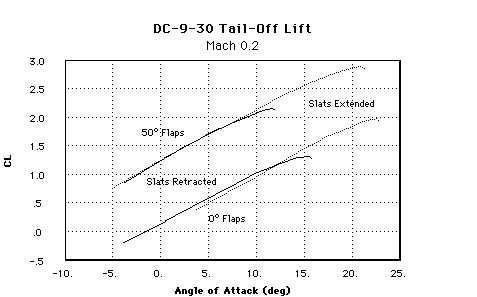This is a conceptual question as much as an empirical one, but the question is: Does the lift of a wing change when the slats (or any other leading edge device) are deployed? I am stipulating that the angle of attack $(\alpha)$, freestream dynamic pressure $(q_\infty=\frac{\gamma}{2}p_\infty {M_\infty}^2)$, and wing area $(S)$ remain constant. We know that slats can allow the wing to operate at higher angles of attack, but do they change the lift of the wing at any given angle of attack? I am fairly confident that the answer to this question is no, but I was looking for a more rigorous (and possibly mathematical) explanation.
-
$\begingroup$ Not that this is necessarily off-topic here, but note there are probably lots of experts at aviation.stackexchange.com who might be more familiar with the situation. $\endgroup$– user10851Commented May 28, 2014 at 18:46
-
$\begingroup$ The wikipedia page says they increase the lift coefficient at a given AoA and speed. $\endgroup$– tpg2114Commented May 28, 2014 at 18:48
-
$\begingroup$ @tpg2114 I don't see that, where does it say that? It says that slats allow the wing to operate at higher angles of attack, but that's not what I am asking. I specifically stated that nothing (not AoA, not dynamic pressure, not wing area) is to change. So clearly this does not answer my question. $\endgroup$– Bryson S.Commented May 28, 2014 at 18:55
-
$\begingroup$ The second sentence in the first paragraph "A higher coefficient of lift is produced as a result of angle of attack and speed, so by deploying slats an aircraft can fly at slower speeds, or take off and land in shorter distances" $\endgroup$– tpg2114Commented May 28, 2014 at 18:58
-
$\begingroup$ I think the wiki article is equivocal at best. It does not explicitly say that the angle of attack remains the same. Can we find another source that is less ambiguous? $\endgroup$– Bryson S.Commented May 28, 2014 at 19:26
2 Answers
I think you're asking: In the lift coefficient vs AoA curve do slats/flaps increase the slope of the curve as well as extend it?
According to Denker that doesn't appear to be so, although he doesn't specifically distinguish between slats and flaps.
-
$\begingroup$ Although, the added complication is to understand if the wing was separating badly before the slat was deployed. In hat case, obviously the wing will create more lift when the slat is deployed. The thrust of my original question was in conditions when the original wing was NOT operating in separated conditions. $\endgroup$ Commented Jun 1, 2014 at 18:06
Like most questions related to aerodynamics, Stanford University offers the best information needed to answer this question. The following instructional site (presumably for students) outlines the fundamentals of high-lift devices (AA241 - High Lift Aerodynamics), and includes this highly informative plot of Cl vs AoA for the DC-9-30:

The image clearly shows that the slats barely modify the lift at a given angle of attack, but do allow the wing the operate at much higher angles before stalling. This is exactly what I was looking for!!!
